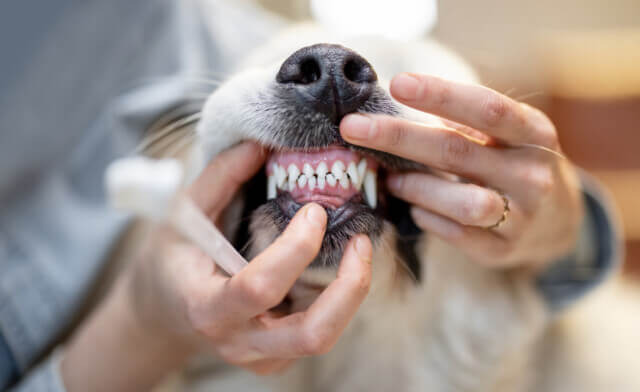How to Get Your Pet to Eat Small Breed Dog Food
If you have a small breed dog, you’ll know that they can be a little bit picky when it comes to their food. Small breed dog food is designed to be nutritionally complete and balanced for your pet, but getting them to actually eat it can sometimes be a challenge.
If you’re finding that your small breed dog is turning their nose up at their food, there are a few things you can do to try and encourage them to eat. Keep reading for our top recommendations and tips.

Set a Schedule
First, it’s important to have a set feeding schedule for your pet. Small breed dogs have small stomachs, which means they can’t eat as much as their larger counterparts. It’s best to feed them smaller meals more frequently throughout the day, rather than one or two large meals.
So, what time should you feed your dog? This will depend on your schedule and their individual needs, but most small breed dogs will do well with three four meals per day. Talk to your veterinarian about creating a feeding schedule that’s right for your pet. You can also ask them about choosing the most nutritious dog food for small dogs.
Provide Variety
Dogs, in general, can get bored of eating the same thing every day. Giving them a variety of quality pet foods and fresh dog food options will not only provide them with the nutrients they need, but it can also help keep their interest in their food.
Just make sure to choose high-quality foods that contain safe ingredients for dogs. Your dog’s diet should also be nutritionally balanced and appropriate for their age, weight, and activity level.
Try Dry Foods
These days, there are plenty of dry dog food options that are both delicious and nutritious. So, if your small breed dog is picky about their food, try feeding them small breed kibble. Just remember, dry dog food ingredients can vary, so make sure to choose a good pet food that’s high in protein and low in fillers.
You can also try using a dog kibble topper to make dry food more appealing. These are available in a variety of flavors and can be used to add extra nutrition and flavor to your pet’s food. Chopped, pet-safe fruits and vegetables are also a great way to add some extra flavor and nutrients to their kibble.
Try Wet Foods
If your pup is really picky, you may want to try feeding them wet dog food. This can be a great option for small breeds because it’s often more flavorful and aromatic than dry food. It’s also usually softer and easier to chew, which can be helpful for older dogs or those with dental problems.
Depending on your dog’s age, high protein wet puppy food and adult wet dog food are both great options. Just make sure to look for healthy wet dog food brands that use high-quality ingredients in their products. If you’re not sure which wet food to choose, talk to your veterinarian. They can help you choose the healthiest wet dog food for small dogs.
Feed Your Dogs After You Eat
Feeding your dog after you eat is one way to encourage them to eat their food. This is because they’ll be able to smell your food and see you eating, which can make them more interested in their own food.
It’s important to note that feeding small dogs table scraps is not generally recommended. This is because human food is often high in fat and salt, which can be harmful to your pet. However, feeding dogs meat and other pet-safe foods is a better way to add variety and interest to their diet.

Add Special Ingredients
As we mentioned earlier, you can use a variety of ingredients to make your pet’s food more appealing. Things to add to your dog’s kibble include chopped fruits and vegetables and unseasoned, human-grade meat. You can even mix dry dog food with water to enhance the flavor of your pet’s food.
When adding to your dog’s food, use whole ingredients and avoid processed foods. If in doubt, talk to your veterinarian before adding anything new to your furry friend’s diet.
Try Broth or Stock
Another fantastic way to add flavor and nutrition to your pet’s food is by using broth or stock. You can make your own or buy it at the store, but make sure to choose a product that’s made with dog-safe ingredients and doesn’t contain any onions or garlic. These ingredients are toxic to dogs and should always be avoided.
If your dog loves chicken, you can use chicken broth to enhance the flavor of their food. Just add a few spoonfuls to their kibble or wet food and stir it in. Bone broth, beef broth, and fish stock are also great options.
Cut Back On Treats
Although it’s fine to feed them as part of a balanced diet, treats are not the best things for dogs to eat. That’s why you should only give them to your pet in moderation. The nutritious ingredients your dog needs should come mainly from their regular meals, not from treats.
If your dog has gained weight from eating too many treats, you may need to cut back on their food to maintain a healthy weight. Low calorie dog food for small breeds is also available and can be a good option for pets that are overweight.
Try High-Protein Foods
High-protein dog kibble, wet food, and treats can be a great way to encourage your pup to eat if they’re a picky eater. High protein dog food brands use meat, poultry, and fish as their main ingredients, which can help make your pet’s food more flavorful and nutritious.
When feeding your dog high protein food, make sure to choose options that are specifically designed for small breeds. Whole food options are always the best choice as they provide the most nutrition for your pet.
Try Grain Free Options
If your dog is allergic to grains or has sensitivities, you might want to try grain free dog food like Earthborn Holistic Wet Grain-Free. The best grain and gluten free dog food brands use vegetables, fruits, and meat as their main ingredients, which can help make your pet’s food more digestible and nutritious. This type of diet is also among the best sensitive skin and stomach dog food options.
Minimally processed dog food is also a good choice for grain free options as it contains fewer ingredients that can cause allergies. As always, consult with your veterinarian before making any changes to your pet’s diet.
Transition Between Foods Slowly
Whenever you’re making changes to a small dog diet, it’s important to do so gradually. This will help prevent gastrointestinal upset and allow your dog to adjust to the new food. Healthy food for small dogs should be introduced slowly over the course of 7-10 days.
To transition your dog to a new food, start by mixing their old food with the new food in a 75/25 ratio of old to new. Over the course of 7-10 days, gradually increase the amount of new food while decreasing the amount of old food. By the end of the transition period, your dog should be eating only the new food.
Increase Exercise
Increasing your dog’s activity level is a great way to build their appetite and help them maintain a healthy weight. If your dog is overweight, you may need to increase their exercise gradually to avoid health problems.
There are a number of ways to increase your dog’s activity level, such as going for walks, playing fetch, or enrolling in a dog agility class. Combine exercise with healthy small dog food to help your pet reach and maintain their ideal weight. As mentioned earlier, small breed diet dog food is a good option if your pup is overweight.

Rearrange the Feeding Area
Another way to encourage your dog to eat is to make sure their food is accessible and appealing. Start by placing their food in a spot that’s away from loud noises or commotion. Dogs are more likely to eat in a calm, quiet environment.
You should also make sure their food and water bowls are clean and free of any debris. Wash them with warm, soapy water and rinse them thoroughly. When dry, fill the food bowl with top small breed dog food like Earthborn Holistic Primitive Naturals and the water bowl with clean, filtered water.
Feed the Right Amount
Overfeeding or underfeeding your dog can lead to health problems, so it’s important to make sure you’re feeding them the right amount of food. The amount of food your dog needs will vary depending on their age, activity level, weight, and other factors. Your veterinarian is the best source of information about the recommended amount of food for dogs.
When feeding small dogs, remember to portion their food accordingly. Small breed dogs have small stomachs. That’s why pet food nutritionists generally recommend that they eat small meals more frequently throughout the day. Again, your vet will be able to recommend how often and how much you should feed your dog.
Warm Up the Food
A simple tip that’s often overlooked is warming up your dog’s food. This is best done by heating the food in the microwave for 10-15 seconds or until it’s just warm to the touch. Doing this will release the food’s aromas and make it more appetizing to your dog.
Canned wet dog food makes a good substitute for dry dog food and can be easily warmed up in the microwave. If you’re feeding your dog dry food, you can add a little warm water to the food to make it more aromatic.
Create a Safe Eating Area
Finally, it’s important to create a safe eating area for your dog. This is similar to arranging their feeding area in a calm, quiet spot. But it also means making sure the area is free of potential hazards.
For example, if you have other pets in the house, make sure they can’t get to your dog’s food. This will prevent them from stealing the food or getting into a fight over it. You should also keep children and other family members away from the area while your dog is eating.




